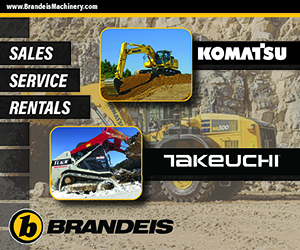By following these seven routine maintenance tips from Moo Young Park, Engineering Manager at Doosan Infracore North America, you can get better performance and life out of your dozer when working in tough applications.
You and your dozer operators should request maintenance training and assistance from your local equipment dealer on proper techniques and familiarize yourself with decals and key maintenance points on the machine.
“The Operation and Maintenance Manual will explain which machine components should be regularly inspected,” says Moo Young. “It also has specific instructions for properly parking your dozer before maintenance.”
High-level pre-maintenance steps include the following:
- Park your dozer on a level surface and lower the blade or other work tool to the ground.
- Engage the parking brake.
- Allow the engine to run at low idle and cool for a set time.
- Stop the engine.
- Place a “do not operate” warning tag before starting maintenance.

| Your local Bobcat dealer |
|---|
| O'Leary's Contractors Equipment & Supply |
“Many manufacturers offer dozers equipped with undercarriages that are designed for easier track carriage cleanout, helping debris fall to the ground rather than become packed in the track system,” says Moo Young. “Areas of the undercarriage that naturally experience greater wear and tear are easy to access.”
Shovels and pressure washers can be used to help clean the undercarriage. During cold times of the year, it’s ideal to store dozers inside overnight to help minimize the chance of material freezing in the undercarriage.
“It’s always a good idea to complete a complete machine walk-around, checking the dozer tracks to see if any components look out of place,” says Moo Young. “You should also check the rollers, idlers and drives to make sure there is no oil leaking, which could lead to major failure in these components.”
Also, inspect the dozer’s track pads. Look for worn leading and trailing edges. Check for any rocks that may have gotten wedged under the trailing edge, which can contribute to undercarriage wear.
If the dozer is being used in harsh applications, such as extreme cold or heat, rocky terrain, or mud and water, the undercarriage may need to be inspected more frequently. For instance, when working in water, make sure you do not exceed the maximum permissible water depth, which is anything higher than the centerline of the upper track rollers.

| Your local Wirtgen America dealer |
|---|
| Brandeis Machinery |
“After working in water, lubricate all lubrication points on the undercarriage that have been underwater,” says Moo Young. “Check that no water has entered the travel gearboxes and undercarriage components.”
Saltwater and saltwater spray are very corrosive. When operating in water, or around snow, make sure to flush the dozer with fresh water as soon as possible and check that all control systems operate properly. Be sure to carefully clean the electrical system to prevent corrosion.
Always refer to the Operation and Maintenance Manual for proper dozer undercarriage maintenance.
“In the Operation and Maintenance Manual, you’ll find both the recommended range for track tension and the exact technique for measuring it,” says Moo Young. “When tracks are not properly tensioned, either too loose or too tight, issues can develop – from increased wear to damage to parts to misalignment of moving parts.”
As working conditions change, so can the track tension; be aware of the environment and mindful of how it can impact the tracks.
- Engine oils
- Hydraulic fluid
- Grease
- Coolant
- Drive motor lubricants

| Your local Komatsu America Corp dealer |
|---|
| Brandeis Machinery |
“Failure to follow proper lubrication recommendations can lead to shortened component life or excess wear on the engine, power train, cooling system or other essential components,” says Moo Young. “Filters are also extremely important since they prevent impurities in hydraulic oil, fuel and air circuits from causing issues.”
Low lubrication levels force the dozer to work harder, lead to instant loss of lubrication and significantly contribute to parts wearing out faster. It’s also important to ensure that lubrication levels are not too high, which can also lead to problems.
The Operation and Maintenance Manual lists specific details and intervals for replacing fluids and filters.
Keep your dozer operating at peak performance by following regular preventive maintenance. Adhering to these tips and properly maintaining the undercarriage can help keep the cost of ownership down and extend the life of your dozer.






































































